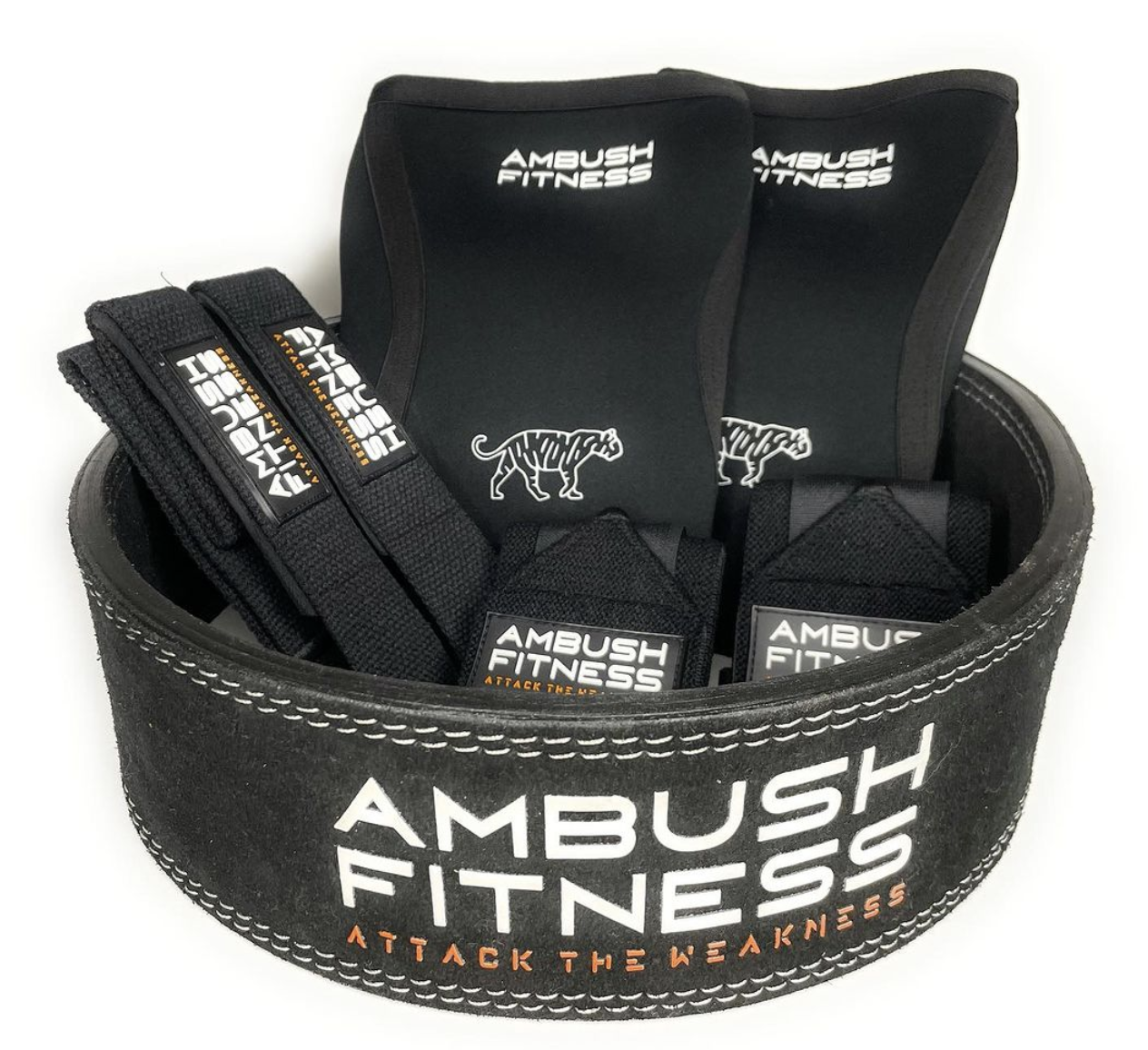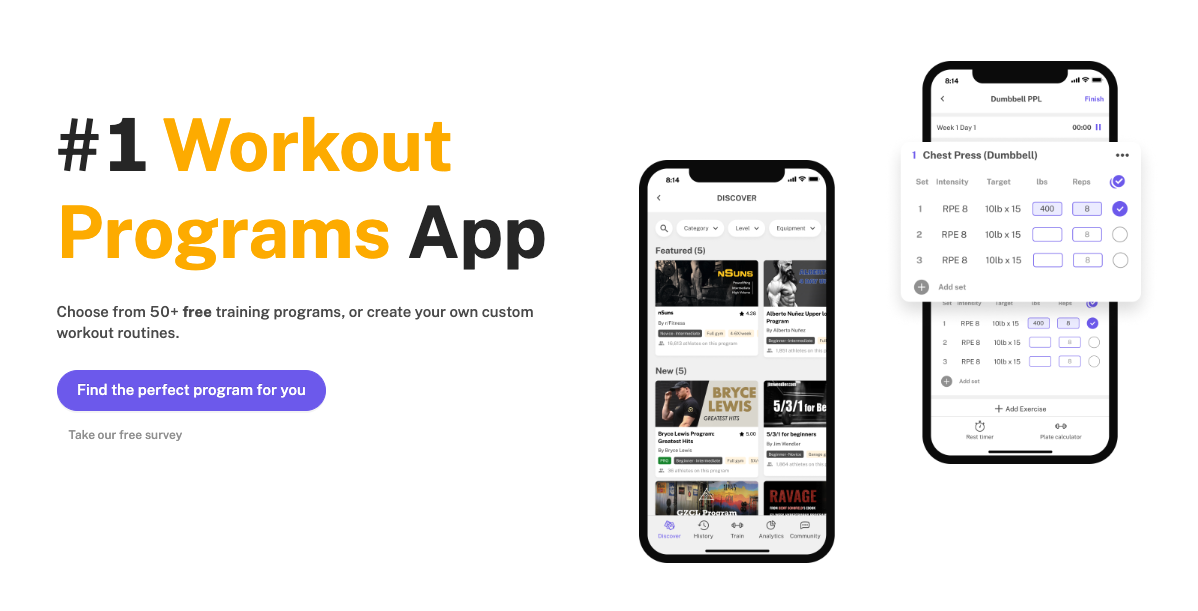How to Deadlift
Written by the Boostcamp staff
Explode your size and strength by perfecting your deadlift
When you look at your training program, whether that be for bodybuilding a sport such as powerlifting, or even weightlifting, it may or may not incorporate one of the most popular compound exercises of all time, which is the barbell deadlift, a staple movement in any form of strength training. The barbell deadlift is a movement used for both size and strength gains, it is a movement that works the full body from the lower body all the way to the upper back, and is placed in many different programs for its numerous benefits.
However, many people perform the deadlift the wrong way and do not even realize it, but there are plenty of ways to fix your form and further your progression, even with just minor tweaks.
Let’s dive in and see exactly how to deadlift.
What is the Deadlift?
The first thing to address is exactly what the deadlift is, as there are some discrepancies with what it primarily should be used as. Some say that the deadlift is best for leg day, while others say that it is best to incorporate amongst your back movements like row variations or pull ups. The truth is, the deadlift is a full body exercise, which is not something that you see with most other compound lifts, but this is one of the more unique strength exercises.
When you perform the deadlift, almost every muscle fiber in the body is activated to an extent, which is very rare for any lift. This hits the gluteus maximus, the erector spinae, and is probably the exercise that you can move the most weight on, aside from a machine like the leg press. Take a look at another compound exercise like the bench press, where the primary muscle group are the pectorals, and the secondary muscle groups are the delts and triceps. The deadlift incorporates the arms and forearms for grip, shoulders and traps to stabilize the weight, back and core to keep the body stable and braced, and the legs work with the posterior chain to act as a lever to get the weight off of the floor.
How to Perform the Barbell Deadlift
When it comes to performing the lift itself, the movement involves much more than just picking up the weight off of the floor, and if you deadlift with improper form, you risk injuring yourself. That being said, good form is crucial.
No matter what your fitness level is, here’s how to do a proper conventional barbell deadlift:
Take a neutral position with your stance, placing your mid-foot right under the loaded barbell, and your feet slightly angled outward, planted hip width apart.
Grip the bar with an overhand grip (which is better with lifting straps) or a mixed grip, shoulder-width apart and retract your shoulder blades
Bend your knees until your shins touch the bar
With a neutral spine, or a flat back, lift your chest up and lower your glutes to an almost sitting position
Take a deep breath and hold it, brace your core, then pick the bar up off the ground (think of driving through your heels)
Continue pressing with your legs and thrusting your hips (almost like a vertical hip thrust) forward until you are fully stood up
Hold the weight for a second at the top of the movement, with locked hips and knees, then lower back to the starting position and repeat (do not bounce the weight)
Ways to Improve Your Deadlift
There are also plenty of cues to use when you are deadlifting that can help you remember certain aspects, and deadlift with better form. For example, telling yourself to “paint your shins” reminds you to keep the barbell close to your body, dragging it along your legs as you lift for a full range of motion. Another one is “drive with your heels” reminding you to, well, drive the lift with your heels so you are getting good leg activation and not lifting entirely with your back.
Besides cues, there are plenty of things to keep in your gym bag that can help with deadlifting. For one, a good weightlifting belt is great to use during heavy deadlifts, as it helps with core bracing and keeps your entire midsection tight during the lift for improved stabilization. There are also weightlifting straps that help with grip, so you are able to do higher volume sets without worrying about the bar slipping out of your hands. Straps will also allow you to lift a little more weight than normal, so they are great for progressive overload.
You can also do deficit deadlifts to help train with a fuller range of motion, or even rack pulls to help with the lockout portion of the deadlift. Rack pulls will also allow you to pull heavier weight,

Image courtesy of Instagram (@attack_the_weakness)
One thing to keep in mind is that straps are not allowed in competitions, so if you are a competitive powerlifter, you do not want to constantly train with lifting straps and become dependent on them.
Pros and Cons of Deadlifting
Many people say that the risk of deadlifting outweighs the reward, and that you are better off just doing other movements rather than the deadlift to build muscle and strength. But, let’s break down the pros and cons of the lift.
Pros
Full body exercise that helps with overall development
Functional movement that transfers to real world tasks very easily
Can progressively overload the entire body
Can be used to build mass as well as strength
As you can see, there are a good amount of benefits to deadlifting. First off, aside from the deadlift being a full body exercise, it is also a functional movement, meaning that perfecting the deadlift will translate over to real world movements. These movements can be things such as picking objects up off of the ground, moving furniture, and other tasks of that sort.
Another benefit of the deadlift is that you are able to progressively overload the entire body fairly simply. This can very much translate to increased strength in other lifts, such as the squat. The deadlift also can help develop muscle mass in tough to reach areas, such as the erectors and lower lats.
Cons
High risk of injury
If you deadlift without proper form, the movement can certainly be very dangerous. This is the main reason why a lifter should really perfect their form on this exercise before even attempting to increase the working weight. Another important tip is once the lifter is following a workout program, make sure to incorporate recovery days and deload weeks to avoid burnouts and injury.
Different Deadlift Variations
There are also different types of deadlifts, with the two most common variations being the conventional deadlift and the Romanian Deadlift. The Romanian Deadlift, or RDL, puts a much larger emphasis on the hamstrings and glutes, almost isolating them, making it an optimal leg day exercise, especially if you are trying to build up the gluteus maximius. Now, you may have to use a bit lighter weight, but that is okay.
There are also different stances and grips that can be utilized during this exercise, with the two most common stances being sumo and conventional. The sumo stance involves a wider foot placement, and it takes a bit of the stress off of the erectors and places more emphasis on the hamstrings and glutes For that reason, you will more than likely see sumo deadlifts programmed into a leg day rather than a back day. Conventional deadlifts involve a closer foot position, and they place stress more on the back muscles than sumo deadlifts do, so you will see a lot of people programming them into a back day.
There are also other less popular variations of the deadlift, like trap bar deadlifts and kettlebell deadlifts, which involve different gym equipment. When it comes to grips on the deadlift, you have things like hook grip, which is where you tuck your thumbs while you pull the bar. This is a great way to improve your grip strength without using straps.
Finding Good Deadlift Programs
Finding a good workout program to incorporate deadlifts is key. Keep in mind that good programs will help with your fitness journey, you would want to find a program that caters to your needs and guides you in the right direction, making sure that you are making the most gains. If you are looking to stay on track and continue with linear progression, then finding a good workout program is the key. Where do you look for a good bodybuilding workout program? Check out the Boostcamp App for some great programs.
Boostcamp is home to over 50 FREE workout programs that consist of strength, hypertrophy, or functional fitness, or both, from the push pull legs program all the way to upper lower. However, with Boostcamp, you don’t have to just follow a pre-written program, you also can create your own program as well, and track your progress to make sure you are on the right track. That being said, when you are looking to incorporate some arm training to further your powerlifting progress, then check out Boostcamp.
Boostcamp is a great place to find free workout programs, and it is designed to be the last workout app you ever need. You can choose from over 50 different programs designed for strength, hypertrophy, or both, and you can custom make your workouts as well.
Wrap Up
Overall, the deadlift is a great exercise to add muscle and strength, but if it is done incorrectly, you run the risk of injury. That being said, it is best to follow these simple steps to deadlift properly, stay safe, and make gains.
Check out the Boostcamp App for some great deadlifting programs and be sure to follow Boostcamp on Instagram and subscribe on YouTube!


